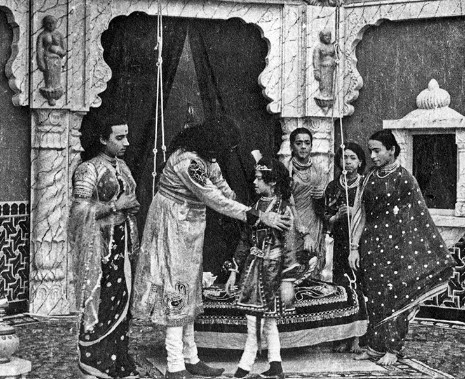
On National Cinema Day: Celebrating Dadasaheb Phalke, the Visionary Architect of Indian Cinema.
Date:

Share post:
Dhundiraj Govind Phalke, popularly known as Dadasaheb Phalke, is hailed as the Father of Indian cinema, a visionary who laid the foundation for one of the world’s largest film industries. Born on April 30, 1870, in Trimbak, Maharashtra, Dadasaheb Phalke’s journey to becoming a pioneer of Indian cinema is a remarkable tale of creativity, innovation, and determination.
Early Years and Artistic Pursuits
Dadasaheb Phalke’s early years were marked by a deep passion for the arts. He excelled in drawing and painting, showing immense talent from a young age. His artistic inclination led him to study at the Sir J.J. School of Art in Bombay (now Mumbai). During his time there, he honed his skills, and his love for visual storytelling began to take shape.
A Career in Photography and Printing
After completing his education, Phalke started his career as a small-town photographer in Godhra, Gujarat. He eventually moved to Bombay, where he worked as a professional photographer and later ventured into the business of printing. This phase of his life allowed him to explore the intricacies of visual communication and prepare him for his groundbreaking journey into cinema.
Inspiration Strikes: Raja Harishchandra
Dadasaheb Phalke’s life took a significant turn when he watched a silent film, ‘The Life of Christ,’ in 1910. This cinematic experience left an indelible mark on him and ignited his passion for filmmaking. He was determined to create a similar magic on Indian screens. His dream materialized when he decided to make India’s first full-length feature film.
In 1913, at the age of 43, Phalke embarked on his ambitious project, ‘Raja Harishchandra.’ With limited resources and a small team, he faced numerous challenges during the production. However, his unwavering commitment and innovative spirit prevailed. ‘Raja Harishchandra’ was released in 1913, marking the birth of Indian cinema.
Also Read: Chocolate Dreams From Kitchen to Empire,Saraam Chocolates’ Inspirational Rise

Pioneering Techniques and Resourcefulness
What set Dadasaheb Phalke apart was his ability to adapt and innovate in the face of adversity. He constructed his own camera, the ‘Make in India’ approach of that era, and experimented with various techniques to overcome technical limitations. He also played multiple roles in his films, from directing to acting and even hand-painting the film frames. His resourcefulness was a testament to his dedication to the art form.
The Advent of Indian Mythological Cinema
‘Raja Harishchandra’ was an instant success and established Phalke as a pioneering filmmaker. He followed it up with several mythological films, such as ‘Mohini Bhasmasur’ (1913) and ‘Satyavan Savitri’ (1914). These films resonated with the Indian audience, as they drew inspiration from the rich Indian mythological and cultural heritage. Phalke’s films began to create a sense of national identity through the medium of cinema.
The Formation of the Hindustan Film Company
Recognizing the need for a more structured approach to filmmaking, Dadasaheb Phalke established the Hindustan Film Company in 1917. This marked a significant step in organizing the Indian film industry. He also created a framework for screenwriting, production, and distribution, setting standards for future filmmakers.

Legacy and Impact
Dadasaheb Phalke’s contribution to Indian cinema goes beyond being the Father of Indian cinema. He was an innovator, a visionary, and a true artist. His dedication to storytelling through cinema inspired generations of filmmakers. His pioneering spirit and resourcefulness continue to be a source of inspiration for independent filmmakers in India.
Phalke’s legacy lives on through the Dadasaheb Phalke Award, the highest honor in Indian cinema, presented annually by the Government of India. It serves as a reminder of his enduring influence on the world of filmmaking.
Conclusion
Dadasaheb Phalke’s journey from a talented artist to the Father of Indian cinema is a testament to the power of passion and perseverance. His pioneering work laid the foundation for the Indian film industry and continues to inspire filmmakers worldwide. He will forever be remembered as a visionary who brought the magic of cinema to India, enriching the nation’s cultural tapestry.
Also Read: Innovation for Good, Prosthetic Revolution College Student’s Gift of Mobility
